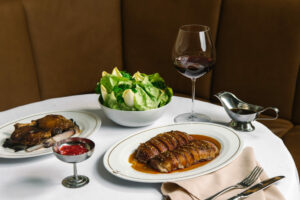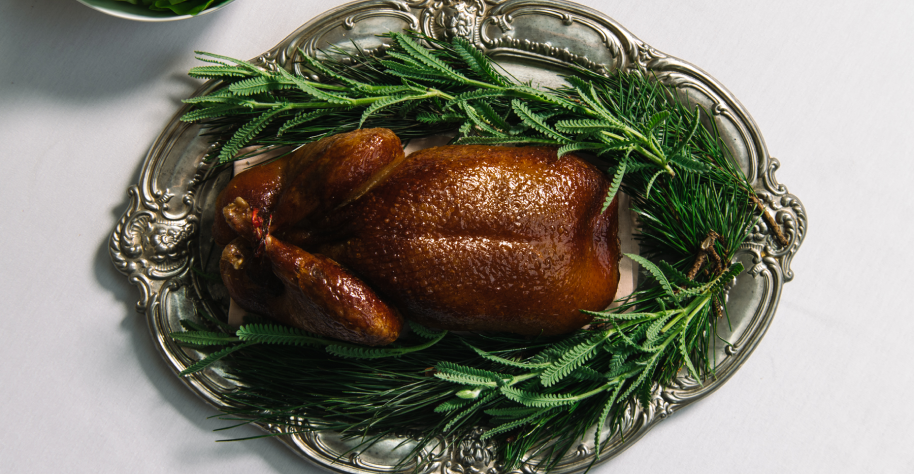Salmon en papillote, boeuf bourguignon, potatoes dauphinoise, bouillabaisse, duck pâté en croute – all synonymous with French cuisine. Although, none are quite as extravagant or spectacular as the classic French dish ‘canard à la presse’ – or pressed roasted duck.
A partially roasted duck is put into a heavy press to extract the blood and bone marrow. The juices are used to create a rich sauce that’s served with the breast and legs. Traditionally, the sauce is enriched with the duck’s ground liver, butter and Cognac.
Its origins date back to Paris in the 1800s and the best known is legendary restaurant La Tour d’ Argent where the dish is a signature and each duck since 1890 is numbered. Apparently, Charlie Chaplin ate duck 253,652; 112,151 went to U.S. President Franklin Delano Roosevelt; and Edward VII was served number 328 while still Prince of Wales.
The duck press itself is a large metal press on two or four, often webbed, heavy feet to keep it stable. A spout low down allows the liquid to be collected easily as the duck carcass is slowly pressed. They don’t come cheap – in 2016, a silver-plated press from Tour d’Argent fetched $65,000 while Anthony Bourdain’s personal duck press sold for $52,000.
While French cuisine has long celebrated old-fashioned cooking tools and methods and a focus on things that take time, culinary destinations across the world are embracing this approach once again. Duck press can be found in the kitchens of some of the world’s most exclusive Michelin-starred venues, from New York’s Daniel and Orchard Park restaurants to Marcel’s in Washington DC and Marchal in Copenhagen’s Hotel d’Angleterre.
Now, Sydney’s elegant, European-style grand brasserie and bar, The Charles, is honouring this French classic.
“The hallmark of a European brasserie is the house specialty,” explains Sebastien Lutaud, Director of Culinary. “At The Charles, ours is the ‘Canard à la Presse’, or whole dry-aged Maremma roasted and pressed duck. It takes around two weeks to make each dish, but it’s nothing short of splendid to eat.”
At The Charles, preparing the duck and glazing it with Valhrona Oabika (concentrated cocoa fruit juice) takes almost a day, then each duck is dry-aged for around 10 days in a custom-built room in the kitchen. Once ready, it’s quickly roasted at a very high heat to achieve caramelisation, crispy skin perfection and juicy meat.
The beautifully presented whole roast duck is carried to the diner’s table to showcase the duck before it is carved. Back in the kitchen, the duck breasts and legs are removed and the carcass cut in half lengthways. On the open kitchen pass, two extravagant copper-plated duck press take pride of place to create the superb sauce for this delightfully crispy roasted duck dish. The carcass is packed into the press and slowly compacted, resulting in an incredibly flavoursome liquid. To thicken, The Charles team stray a little from tradition and instead combine the liquid with a roast chicken jus gras. It’s sweetened with Pedro Ximenez and reduced to create this distinctly duck sauce.
Once plated, the finale takes place at the table, where the exquisite duck sauce is gently poured over the sliced and perfectly arranged duck breasts, served with tender confit duck legs.
“It certainly takes patience, but it’s no secret that some of the best and most delicious flavours take the longest to create,” reflects classically French-trained Executive Chef of The Charles, Billy Hannigan (Loulou Bistro; The Ledbury; Guillaume at Bennelong). “In its simplest form, we’re creating a roast duck sauce. It just this one is anything but simple.”
Our tip: do yourself a favour and try the duck.

